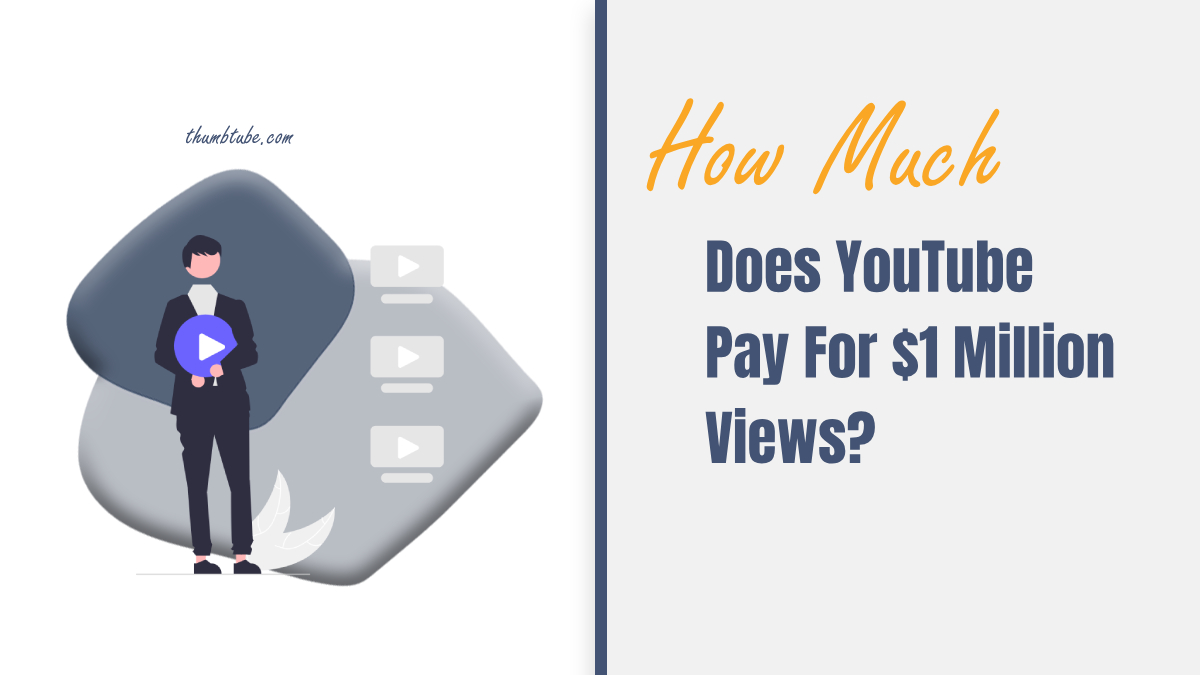YouTube has become a lucrative platform for content creators, offering the potential for substantial earnings. One common milestone many creators aspire to is reaching one million views on a video. However, the question remains: How much does YouTube pay for one million views? In this article, we’ll delve into the factors that influence YouTube earnings, including ad revenue, CPM rates, and other revenue streams.

Understanding YouTube Ad Revenue
YouTube pays creators through a system called the YouTube Partner Program (YPP). To be eligible for the program, channels must meet certain criteria, including having at least 1,000 subscribers and 4,000 watch hours in the past 12 months.
Once a channel is eligible for monetization, creators can earn revenue from ads that run on their videos. Advertisers pay YouTube to display their ads, and YouTube shares a portion of that revenue with the content creator.
Factors Influencing YouTube Earnings
1. Ad CPM (Cost Per Thousand Impressions)
CPM represents the amount advertisers pay for every one thousand views of their ad. CPM rates can vary widely depending on factors such as the audience’s location, the content’s niche, and the advertiser’s targeting preferences.
2. Ad Format and Type
Different ad formats, such as display ads, overlay ads, skippable video ads, and non-skippable video ads, have varying revenue potentials. For example, skippable video ads tend to generate higher CPM rates than non-skippable ads.
3. Viewer Engagement and Watch Time
Videos with higher viewer engagement, longer watch times, and lower bounce rates are more attractive to advertisers. As a result, they tend to receive more high-paying ads.
4. Ad Blockers and Ad Skipping
Ad blockers and viewers who skip ads can reduce the number of monetized views, impacting overall earnings.
5. Content Quality and Relevance
High-quality, relevant content is more likely to attract engaged viewers, leading to higher CPM rates and increased earnings.
6. Seasonal Trends and Events
Ad rates can fluctuate based on seasonal trends and major events. For instance, advertisers might pay more to reach audiences during holidays or major product launches.
Estimating Earnings for 1 Million Views
While CPM rates can vary significantly, a rough estimate is that creators might earn between $1,000 to $3,000 for one million views. This estimate assumes an average CPM of $1 to $3, which is a common range for many YouTube channels. Keep in mind that this is a ballpark figure, and actual earnings can be higher or lower depending on the factors mentioned earlier.
Additional Revenue Streams
While ad revenue is a significant source of income for many YouTubers, it’s not the only way creators can monetize their content. Other revenue streams include:
1. Sponsorships and Brand Deals
Creators can partner with brands for sponsored content, product placements, or brand integrations, which can be highly lucrative.
2. Merchandise Sales
Selling merchandise, such as clothing, accessories, or digital products, related to their content can be a profitable venture for many YouTubers.
3. Channel Memberships and Patreon
Some creators offer memberships on their channel, providing exclusive content, perks, and access to a community. Additionally, platforms like Patreon allow creators to receive direct support from their audience.
4. Affiliate Marketing
By promoting products or services through affiliate links in their video descriptions, creators can earn a commission for each sale made through those links.
While achieving one million views on a YouTube video is an impressive feat, the actual earnings can vary widely based on numerous factors. It’s important for creators to understand these factors and diversify their income streams to maximize their overall revenue potential. By combining ad revenue with sponsorships, merchandise sales, memberships, and affiliate marketing, creators can build a sustainable income from their content on YouTube.
